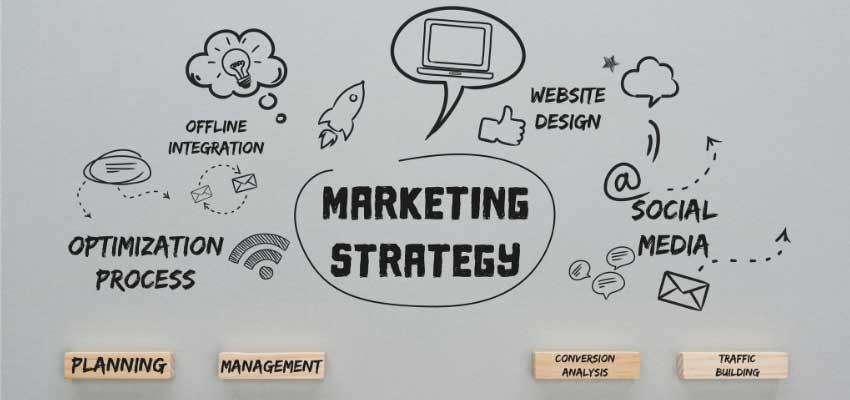Facebook is still the most important social media platform for building your brand. Facebook has 3 billion active monthly users and is the most popular social media network.
The 2023 Q4 Pulse Survey also showed that Facebook is the platform most consumers plan to use for posting and sharing content. Instagram and TikTok were a close second. Facebook marketing is one of the best ways to increase your brand’s voice and identity.
This in-depth guide helps you navigate Facebook and use its tools to the fullest. You can watch the video below and learn why you should not sleep on integrating Facebook into your Social Media Marketing Strategy.
What is Facebook Marketing?
Facebook marketing is a way to promote a brand or business and its products/services through a Facebook Business Page. Brands can create a second website by optimizing their business pages. This allows them to advertise and sell directly to their target audience. Facebook’s advertising platform allows you to create paid posts of various types (e.g., photos and videos) in order to maximize engagement.
With a carefully planned strategy, Facebook can be used to enhance the entire customer experience, from awareness, to purchase, to loyalty.
Facebook Marketing Benefits for Your Business
There are a number of reasons why you should include Facebook in your strategy for social media marketing. It can be used to increase brand awareness, customer engagement and reach new audiences. Facebook can be a powerful tool for promoting your brand and generating a return on investment. Over 62% social commerce buyers in the U.S. use it regularly.
Still not convinced? Not convinced?
Brand visibility is important for your business
Facebook is primarily used by 72% of Facebook’s users to stay in touch with their friends and families, but a large number also use it to get customer service, for entertainment, and to follow brands. You can now present your brand to visitors who are motivated by anything from curiosity to engagement and purchases. Facebook’s average conversion rate for sales across all industries is 8.25%.
Create engaging content
Facebook provides you with ongoing opportunities to engage and interact with your audience. What is considered “engaging”, however, depends on the industry you’re in and what type of business or organization you are.
Retailers can, for example, use Carousels or stories to showcase a new product or UGC. Brands and service providers that are B2B could publish video testimonials. A food brand could poll its followers on a new flavor.
There’s no single-size-fits all approach to marketing on Facebook.
Facebook offers four formats for ad content, including images, videos, carousels, and collections. You can use four different visuals to attract customers.
Your target audience is your best source of inspiration
Facebook analytics can provide a wealth data on your performance and audience preferences. You can use this data to customize your content and meet the needs and desires of your audience, improving engagement and your brand experience. Facebook ads contain sophisticated tools to segment your market, such as:
- Geographic : Select a region or define by population density.
- Demographic: Select your age, gender and marital status.
- Behavioral: Define groups based on brand loyalty or status of users (from non-users up to regular users).
- Income: Select lower, middle or higher class.
- Lifestyle: Segmentation by keywords, based on interests.
- Interests: Select interests that overlap with those of the group you have chosen.
When creating a campaign, you can get the most return on your ad spending (ROAS) by selecting your target audience based on these parameters.
Incorporate ecommerce directly
Make your online store visible on Instagram and you will reach more people.
It’s relatively easy to set up a business account on both sites.
After creating your account, you can refine your online catalogue to target both new and returning customers. For example, State Bicycle Company has over 400,000 followers when it promotes its single-speed city bike range.
Facebook’s community feel allows brands to create Pages that seamlessly blend news, articles, competitions, and offers.
Easy to measure your results
Facebook offers one of the most comprehensive suites of analytics for social media. Here we will outline the basic Facebook analytics . We have a more comprehensive guide.
Facebook provides metrics for likes, comments and shares as well as Page views. Follow each customer to your Page and learn which strategies are most effective. Facebook’s analytical suite can help you to better understand:
- Reach : View the number of people that have seen and interacted with your posts. This includes negative interactions such as hiding posts or reporting offensive content.
- Engagement : Engaged users include those who have clicked on your post or created a Story about your Page’s post. Monitoring your Facebook engagement keeps a pulse on your Page’s growth.
- Likes : The number likes will tell you whether your content is resonating with your audience. You’ll probably find a pattern if you look at what is consistent in the posts with the most/least likes.
- Video Stats: See how your users interact with video content. You can also see how long it was viewed.
- Ecommerce Facebook offers insights and analytics via its Meta Page Insights Tool and Meta Ads Manager to measure engagements on posts and reach. You can view metrics for ad click through rates and conversion rates. You may need to use additional tools for more detailed data on e-commerce, such as sales performance metrics, customer demographics and product views.
Facebook pixels allows you to track conversions and user interactions beyond Facebook and your website.
Facebook Marketing: How to Use It
You’ll need both a Facebook Ad account and a Facebook business page to put your Facebook Marketing into action.
You can use the first to create a focal point for all of your activities. Here’s ours:
Meta Ads Manager, a Facebook Ad Account, allows you to position and create campaigns that will raise brand awareness and convert prospects into customers on Facebook and Instagram.
Step-by-step, let’s go through the process.
Create a Facebook business page
You’ll need to create a fully-fleshed out Facebook business page if you want to reap the rewards of your Facebook marketing. Your Facebook Page is a representation of your brand, and first impressions are important. This is especially true in the digital world where many people compete for attention. Your Facebook Page can also be used to answer questions and provide important information for your customers. Let’s look at how to create an effective Facebook Page that will have maximum impact.
Step 1: Create an entirely new page
Click on ” Page ” and ” New Page ” to create your business page. Name it and indicate the industry that is relevant to your business. Name should be the same as your business or brand name.
Step 2: Add your biographical information
You can describe your company, its products and services in the optional “bio” area. Click ” create page.” when you’re done.
Step 3: Provide business details
Here’s the place to provide your contact information if you want to allow customers to reach you.
Step 4: Create your page’s look
This is where you can make your Page really stand out. You should consider two visuals: the Cover Image which runs across the top and the circle profile image at the top.
Make sure your image selection is in line with your visual strategy and brand style guide. Some brands choose a photo of the founder or CEO as their profile image, while others use their logo. Choose whatever best fits your brand’s identity.
The extras available include buttons such as “Book Now” or “View Shop”, and other direct messaging options (including WhatsApp messages and email).
Create a Facebook Ad Account
You can create your ad accounts once you have a Facebook Page. This is done from the MetaBusiness Suite dashboard (formerly Facebook’s Business Manager). We’ve also created a guide for Facebook Business Manager if you don’t already have one.
You can only perform the following steps if an administrator has assigned you an admin, editor, or advertiser Page roles.
Here are the steps you can take to create an account in Meta Business Suite:
Step 1: Link to your new page
Click on ” Add Page ” under ” Pages ” and your page will be visible in the Business Manager.
Step 2: Create an ad account
Click on ” Create ad account ” (or ” add ad account if you have already created at least one).
Facebook has a limit on how many ad account a business can have. This limit increases as advertising expenditures increase. You can check the limit of your ad accounts in Business manager.
Step 3: Give the account a name
Give your new account a name, and fill in the details for time zone and currency. Choose the Business Page that you created earlier to link to the new account.




